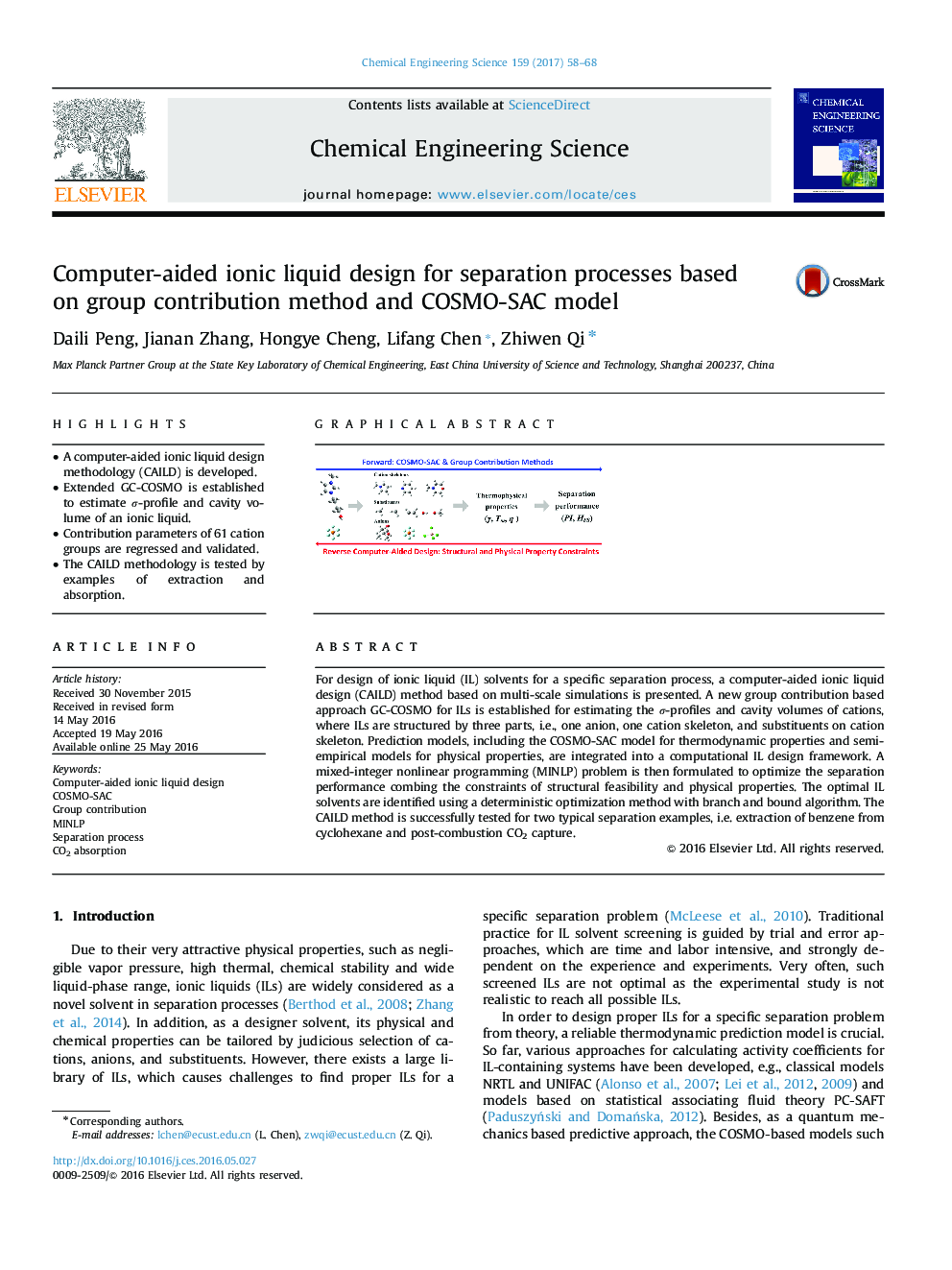| Article ID | Journal | Published Year | Pages | File Type |
|---|---|---|---|---|
| 6467771 | Chemical Engineering Science | 2017 | 11 Pages |
â¢A computer-aided ionic liquid design methodology (CAILD) is developed.â¢Extended GC-COSMO is established to estimate Ï-profile and cavity volume of an ionic liquid.â¢Contribution parameters of 61 cation groups are regressed and validated.â¢The CAILD methodology is tested by examples of extraction and absorption.
For design of ionic liquid (IL) solvents for a specific separation process, a computer-aided ionic liquid design (CAILD) method based on multi-scale simulations is presented. A new group contribution based approach GC-COSMO for ILs is established for estimating the Ï-profiles and cavity volumes of cations, where ILs are structured by three parts, i.e., one anion, one cation skeleton, and substituents on cation skeleton. Prediction models, including the COSMO-SAC model for thermodynamic properties and semi-empirical models for physical properties, are integrated into a computational IL design framework. A mixed-integer nonlinear programming (MINLP) problem is then formulated to optimize the separation performance combing the constraints of structural feasibility and physical properties. The optimal IL solvents are identified using a deterministic optimization method with branch and bound algorithm. The CAILD method is successfully tested for two typical separation examples, i.e. extraction of benzene from cyclohexane and post-combustion CO2 capture.
Graphical abstractDownload high-res image (254KB)Download full-size image
